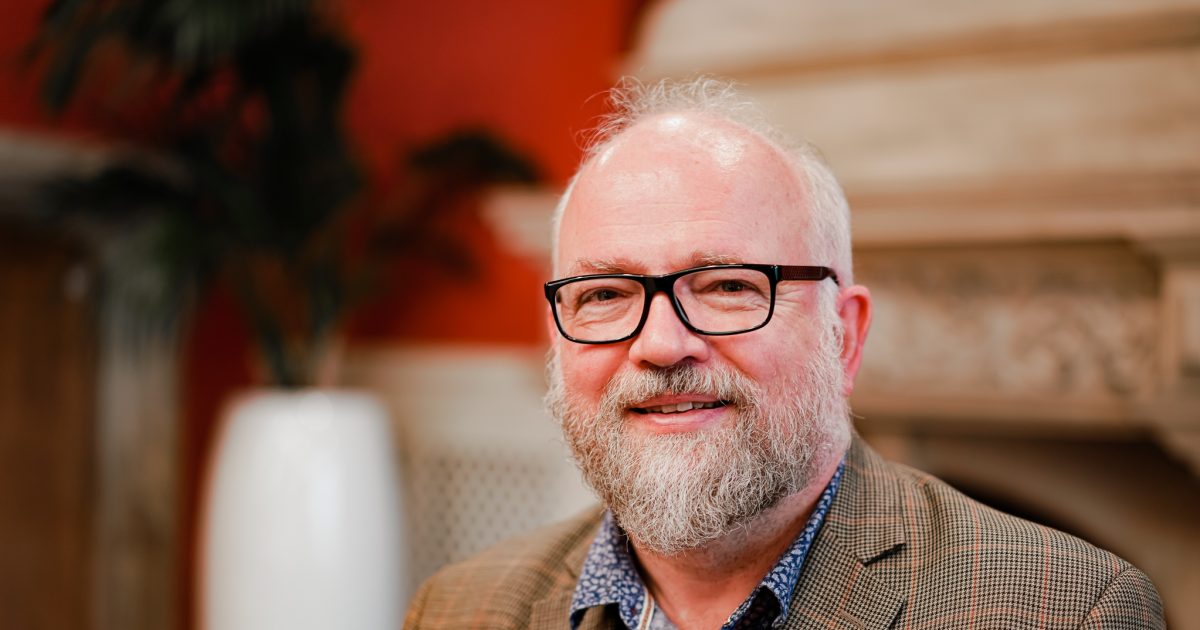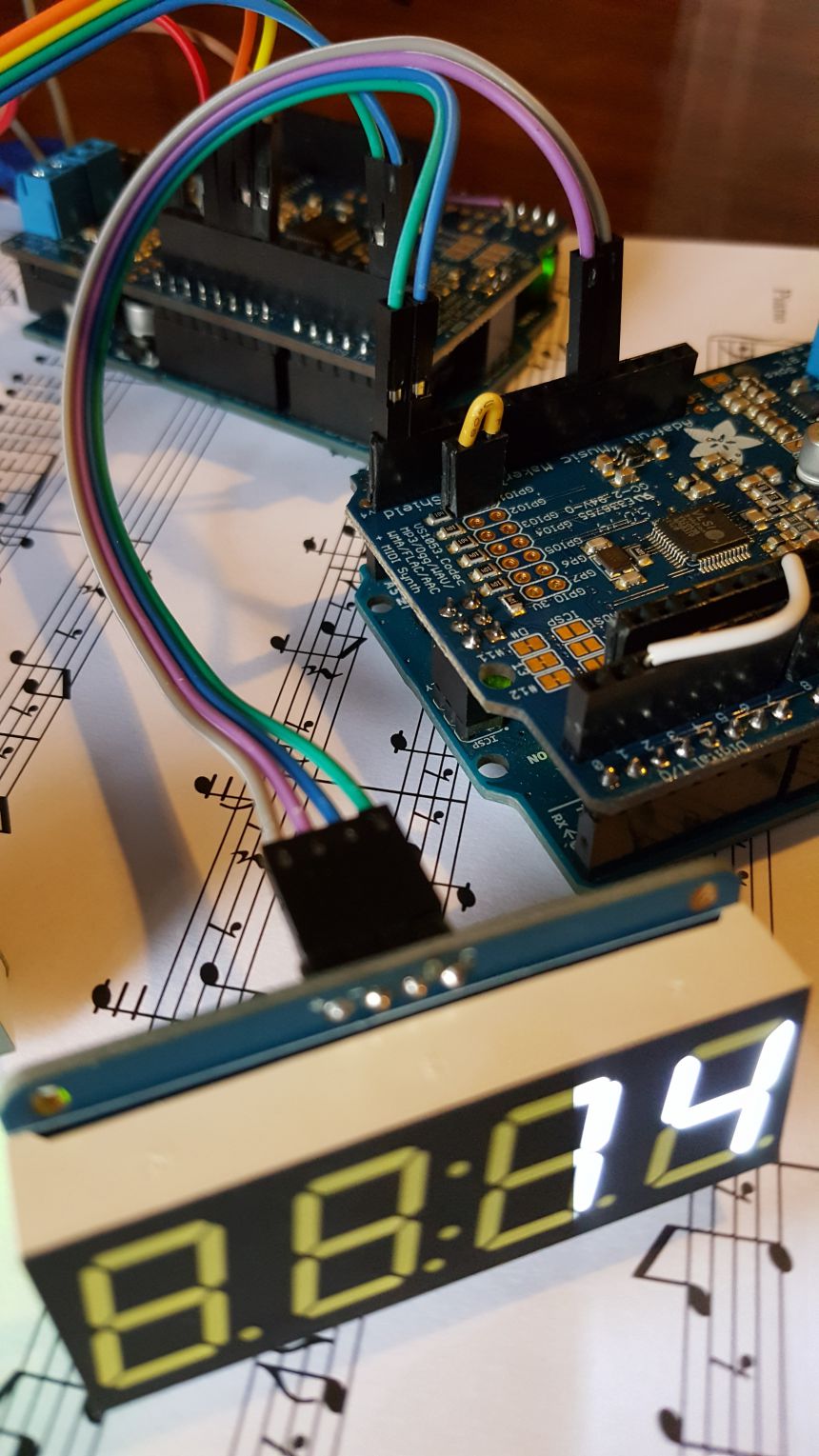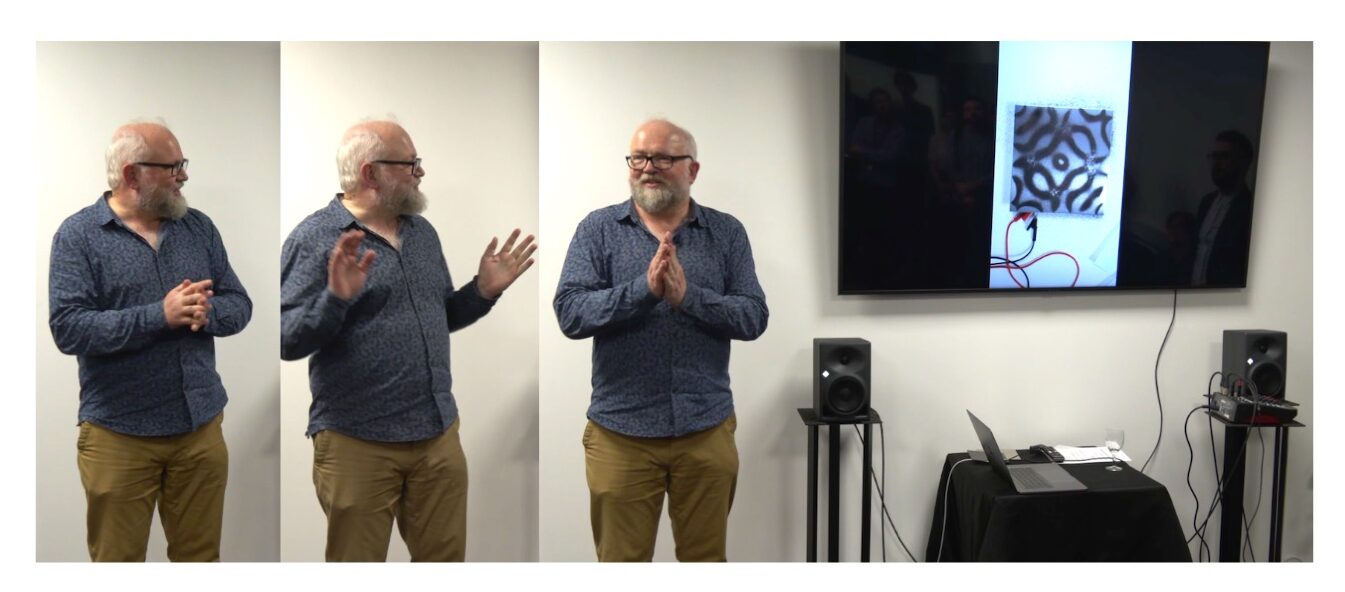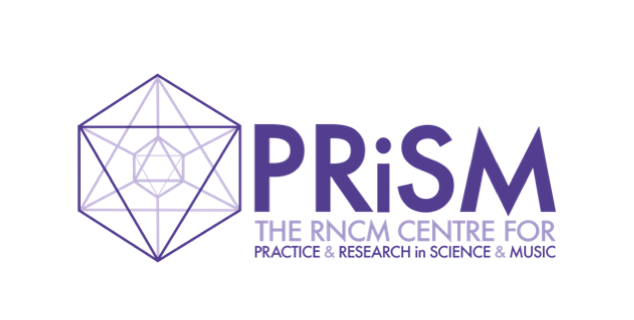David De Roure
Meet the PRiSM Technical Director, David De Roure

PRiSM Technical Director, David De Roure. Photograph by Sally-Anne Stewart
Introduction
David De Roure is Professor of e-Research at the University of Oxford and Turing Fellow at The Alan Turing Institute, as well as an Honorary Visiting Professor at RNCM. His research is truly interdisciplinary and he works across a number of areas including humanities (digital musicology), social sciences (social machines and web science), engineering (Internet of Things), computer science (distributed systems and sustainable software), and libraries and archives (knowledge infrastructures).
His extensive and varied background is well documented on the profiles linked above, but we wanted to find out more about what makes him uniquely suited to his role as Technical Director of PRiSM, and what he is currently working on.
Q: How did you become involved with PRiSM?
Music, Artificial Intelligence and Ada Lovelace are the threads that brought David to PRiSM, around an interdisciplinary symposium celebrating the life and legacy of Ada Lovelace in 2015 led by Professor Ursula Martin.
Emily had designed an event at the Science Museum in London, called Science of Harmony in October 2015 with University of Liverpool mathematician Professor Lasse Rempe-Gillen. This included a performance of Emily’s composition Ada sketches, followed in the second half by engaging the audience in their own compositional task – transforming numbers into notes with pencil and paper, to be performed by the RNCM musicians. The format was repeated in Oxford in the lead-up to a major symposium to mark the 200th anniversary of Ada Lovelace’s birth, which featured David in conversation on stage with Emily (watch here) and also included his music-generating code using a simulator of Babbage’s Analytical Engine. David soon made this software available online, inspired by Emily’s Numbers into Notes format. The discussions and collaboration continued and led to David becoming a founding member of PRiSM.
Q: Why were you drawn to PRiSM?
David has an impressive background in music information retrieval and analysis, for example as co-investigator on the major project Fusing Audio and Semantic Technologies (FAST). He points out that there is a difference in approach between studying different pieces of music and analysis using Music Information Retrieval (MIR), and digital musicology where people will know the history, influences, reception and diffusion of influences across time and space for the pieces they study. This larger picture doesn’t have to be a factor when you take a piece of music off the shelf, analyse it, and put it back, but it is an approach that has always fascinated him. Now he is pursuing his passion for the creation of music, and PRiSM is a way of exploring this through the frame of music and computing.
There is a scientist and a mathematician in me coming to this as well. What I bring is an instinct to join everything together – catalysing the interdisciplinary conversations and co-creation that underpin PRiSM. David De Roure, PRiSM Technical Director

The arduinos take Ada Lovelace’s contention two centuries ago that Babbage’s hypothetical Analytical Engine “might compose elaborate and scientific pieces of music” and applies new technology, via an ‘orchestra’ of Arduino microcontrollers, which can be audience-controlled and digitally coupled with infrared remote controls so that interactive compositions might evolve. Photograph by Professor David De Roure Picture This
Q: What is your vision of music and computing?
There is a research field interested in how to get computers to do things that require human creativity. The goal is to produce music by computer that is indistinguishable from that of humans (computational creativity). On the other end of the spectrum are humans using computers to help us to make music. There is a place on that spectrum that interests me. For me, it is not about computers replacing humans, rather humans and computers co-creating music. For example, rather than trying to write large pieces of music by machine, this could mean writing fragments by machine that are then assembled by human.
Q: What about the role of Artificial Intelligence (AI)?
AI has always been there (since the 1960s) and is currently in fashion again. Using the term ‘AI’ feels like I am following a fashion for marketing purposes. What people are using now – it’s not AI, it’s neural nets, deep learning, machine learning…or whatever current term they want to use. For me, AI has always been in music and I have always been into AI.
Q: What are you currently working on with PRiSM?
History and hardware, maths and music, not necessarily in that order. Having revisited and partly reimagined Lovelace and Babbage, I’m now enjoying the PRiSM research around ‘Chladni Plates’ (see image below). Can we use them to design a new musical instrument? This brings some fascinating challenges in maths and engineering as well as composition and performance. Our AI work in conjunction with The Alan Turing Institute, around music and historical text, featured in performances last year and has leapt forward now we’re developing our own software and tools in PRiSM. And I continue to explore the intersection of maths, algorithms and music, which involves some interesting algorithmically enhanced instruments (and a houseplant).
Q: Tell us something we might not know about you?
I play jazz. [Q: what do you play?] Badly (he laughs) electric bass. I am part of a jazz and AI community – we have regular informal get-togethers at the intersection of jazz and creative computing. The improvisation aspect of jazz is relevant intellectually to PRiSM – if we can understand how people interact in the moment using AI, for example, composers and performers, then we are understanding something about the relationship between humans and machines that really matters. Investigating jazz and AI is important to understanding the future of humans and computers.

David De Roure introducing Chladni Plates at the PRiSM Lab launch on 26 February 2020


